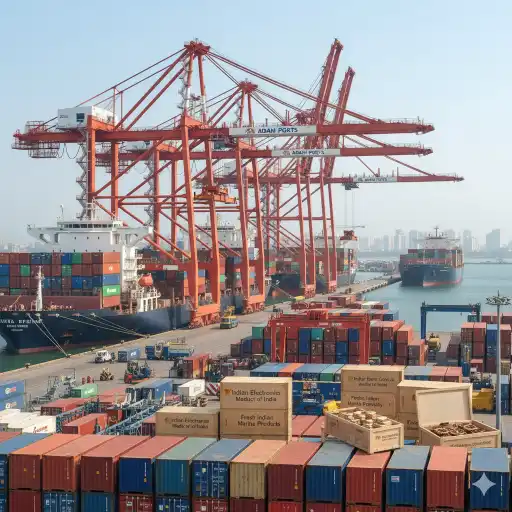Indian exports are navigating challenges following the 50% tariffs imposed by the United States under President Donald Trump. These tariffs affected over 60% of India’s exports to the US, including textiles, gems and jewellery, marine products, and leather goods. Pharmaceuticals and electronics were comparatively less impacted.

Exports to the US fell sharply by 37.5%, dropping from USD 8.8 billion in May 2025 to USD 5.5 billion in September 2025, marking the steepest decline of the year, according to the Global Trade Research Initiative (GTRI).
Market Diversification Softens Impact
Despite these setbacks, India is successfully diversifying its export markets, turning trade barriers into opportunities. Exports grew 6.7% YoY in September 2025, driven by electronics, engineering goods, and marine products. Overall, merchandise exports in H1FY26 rose 3% YoY to USD 220 billion, while imports increased 4.5% to USD 375 billion.
Exports to alternative markets such as Spain, UAE, China, and Bangladesh have shown steady gains, mitigating the impact of US tariffs. Positive growth was recorded in 24 countries, accounting for nearly 59% of India’s exports.
Key Export Segments
Some sectors showed strong performance despite tariffs:
- Electronics: +50.5% YoY in September
- Rice: +33.2% to USD 924.8 million
- Marine products: +23.4% to USD 781 million
- Gems and jewellery: +1.8% growth April–September
However, labor-intensive sectors faced challenges:
- Readymade garments: -10.1% YoY
- Cotton and handloom: -11.7% YoY
Trade Deficit and Economic Outlook
India’s trade deficit stood at USD 154.99 billion for H1FY26. Still, India remains a bright spot in the global economy, with IMF projecting 6.6% growth in FY26, slightly moderating to 6.2% in FY27.
Opportunities and Strategic Response
To sustain momentum, India is:
- Diversifying export destinations
- Improving domestic logistics and trade infrastructure
- Supporting MSMEs affected by tariffs
- Investing in warehousing, cold chains, and last-mile delivery
Experts note that Trump tariffs could become an opportunity: a diversified export portfolio could convert short-term setbacks into long-term gains.
